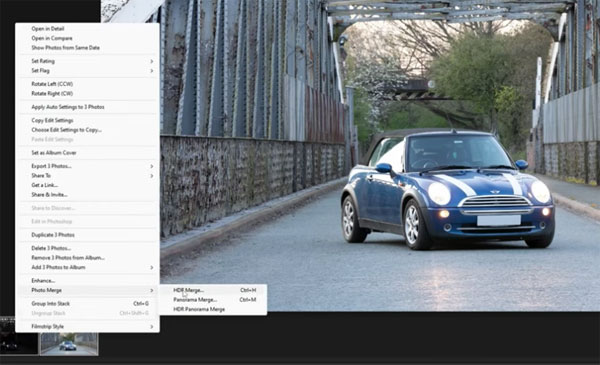Why you should bury your garden tools in sand, according to experts
If you’re looking to preserve the longevity of your tools, you ought to know this gamechanging tip
 REAL ESTATE
REAL ESTATE
 REAL ESTATE
REAL ESTATE
 REAL ESTATE
REAL ESTATE
 REAL ESTATE
REAL ESTATE
 REAL ESTATE
REAL ESTATE
 EVENT
EVENT
 LANDSCAPE
LANDSCAPE
 LANDSCAPE
LANDSCAPE
 CONCERT
CONCERT
 LANDSCAPE
LANDSCAPE
 TRAVEL
TRAVEL

REAL ESTATE
Residential, Commercial, Interiors

LANDSCAPE
Landmarks, Cityscape, Urban, Architectural

FOOD
Hotels, Restaurants, Advertising, Editorial

PORTRAIT
Traditional, Glamour, Lifestyle, Candid

PRODUCT
Studio, Lifestyle, Grouping

EVENT
Conference, Exhibition, Corporate

FASHION
Portrait, Catalog, Editorial, Street

TRAVEL
Landscape, Cityscape, Documentary

SPORT
Basketball, Football, Golf

CONCERT

STILL

STREET
Experienced landscape photographers are known for carrying a bunch of lens filters, and the discussion often involves using ND filters for cutting the amount of light entering the camera to permit the use of slower shutter speeds. Today’s tutorial, however, concerns the more common polarizing filter and how to use it for spectacular results.
Unlike expensive ND filters that can be difficult to use, the affordable polarizer requires no complicated computations. And all that’s required is rotating the filter ring until you see the exact affect you want.
Polarizers work their magic in a number of ways. They darken pale blue skies, increase saturation, and remove image-killing reflections from non-metallic objects like foliage and water. Instructor Alex Armitage puts it like this: “They provide an indispensable use case that can’t be replicated with anything else.”

This episode is devoted to one specific application; namely photographing waterfalls—a task for which Armitage says, “a polarizing filter is a must.” Despite the rather narrow focus of this nine-minute lesson, the tips you learn will prove helpful with other types of outdoor photographs as well.
The behind-the-scenes tutorial takes place in central Pennsylvania in an area resplendent with small waterfalls. If you don’t currently own a polarizer we guarantee you will shortly. And even if you’ve employed one in the past, we guarantee you’ll learn a thing or too about using a polarizing filter more effectively in the future.
Polarizing filters come in several varieties, the most common of which thread onto a lens. This means you’ll need a couple of cheap step-up rings or more than one filter if you use lenses of different thread sizes. There are also square filters that require an adapter, as well as convenient magnetic versions that are Armitage’s preferred choice for reasons he explains.

Despite how easy the polarizer is to use, Armitage has several solid tips for achieving optimum results under different conditions. One important factor is that your position relative to the angle of the sun has a significant impact on the degree to which the polarizer enhances the scene.
Another thing to keep in mind is that it’s not always preferable to rotate the filter to achieve a maximum effect. That’s because an image may appear flat if you eliminate reflections completely. Bottom line: by the time you’re done watching you’ll understand why Armitage says, “A polarizing filter is typically the first item I recommend to anyone getting started in landscape photography.”
There’s more great advice on Armitage’s YouTube channel, so pay a visit when you have time.
And don’t miss the earlier tutorial we posted from another expert, with 10 pro tricks for shooting better outdoor photographs using basic gear.
Sometimes we come upon a scene that would make am awesome photo—were it not for bland, boring light and ugly distractions in the background. Rather than move on or come back another day the next time this happens, we suggest you watch the tutorial below with a fast and effective edit for making dull images “really POP.”
British photographer Mathew Grimsley hosts an instructional YouTube channel devoted to “straight-to-the point” tutorials on a variety of imaging topics. In today’s episode he demonstrates how to turn a sow’s ear into a silk purse in barely seven minutes.
Grimsley’s straightforward technique combines in-camera HDR with a few adjustments in Lightroom and Photoshop to get the job done. His last step is what Grimsley calls “the cherry on top that will really make this image stand out to the viewer.” Here’s hint: it involves using a phone app to create intentional distortion.

This episode begins with Grimsley explaining how he captured the original shot, just so you’ll appreciate the remarkable transformation that follows. The scene has potential, with a nice car atop an interesting small bridge. But, for the reasons alluded to above, despite good composition, his photo is quite uninspiring.
Grimsley’s method involves taking three images of the scene; one with the exposure recommended by the camera, another that’s somewhat overexposed and a third that is intentionally too dark. All three are imported into Lightroom and the magic begins.
The idea is to combine this trio of photos into one eye-popping image and, as you see, this task is surprising easy to accomplish. With all three images selected, right-click on one of the shots to bring up a window that enables you to first choose Photo Merge and then HDR Merge from the dropdown menus that appear.

Grimsley notes that once you done this, “Lightroom is going to take care of everything itself.” The resulting image is now much improved, but he makes a few basic adjustments in Photoshop to rid the shot of several distracting elements.
All that’s left is what Grimsley calls “the coup de gras” of this impressive technique. You’re likely to be surprised when Grimsley turns to his phone to download an app called Lens Distortion. He then transfers the merged image to his phone.
Grimsley then walks you through the simple step-by-step procedure for transforming the image using the Lens Distortion app. One you’re done it’s a simple matter to transfer the photo back to your computer. The result is an absolutely stunning image.
There’s much more to learn on Grimsley’s instructional YouTube channel, so be sure to take a look. And be sure to check out the tutortial we posted from another image-editing expert, explaining why Local Adjustments can be the key to the best edits possible.
